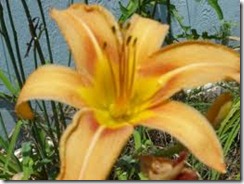Daylily rust is a plant fungal infection that originated in Asia in the late 19th century and remained largely in that area until the early 21st century, when it migrated to North America. The fungus, called urediospores, ranges from yellow to orange-brown in color, powdery in texture and resembles rust. Daylily rust can quickly spread to all your daylilies, especially on a windy day. Monitoring your plants closely and controlling the growing conditions of the plant beds can help treat daylily rust; chemical controls are sometimes required.
- Difficulty:
- Moderate
Instructions
Things You’ll Need
- Pruning shears
- Matches
- Fungicide
- Remove all infected leaves. Check the undersides of leaves that otherwise appear unaffected from above. The infection can spread to unaffected areas, if the sick leaves are not pruned. Burn the infected leaves or recycle them with your other yard waste. The American Hemerocallis Society reports that views among horticulturists on composting the fungus-infested leaves vary; safety of the soil and surrounding plants may be at risk.
- Treat infected daylilies with a contact fungicide to kill remaining spores and prevent a recurrence. Cornell University Plant Clinic suggests applying chemical preparations that contain neem oil, sulfur or potassium bicarbonate; University of Massachusetts Extension suggests using products containing mancozeb or chlorothalonil, but chlorothalonil is not an option while the flowers are in bloom.
- Control the humidity and watering conditions while treating for rust. Spores can germinate in very wet conditions; water early in the day to allow ample drying time before nightfall. Also, space your plants far enough apart to facilitate complete drying of the leaves on each plant.
- Examine your plants each week and treat with chemicals as needed, if signs of rust appear.


Deprecated: strpos(): Passing null to parameter #1 ($haystack) of type string is deprecated in /home/agriviek8Qv/agriviet.net/public_html/wp-includes/comment-template.php on line 2522